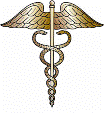Public Health Resources
Date of this Version
2002
Citation
Annals of Tropical Medicine and Parasitology, Vol. 96, No. 7, 655-668 (2002)
Abstract
A recent malaria epidemic in the Menoreh Hills of Central Java has increased concern about the re-emergence of endemic malaria on java, which threatens the island 's 120 million residents. A 2R-uay, in-vivo test of the efficacy of treatment of malaria with antimalarial drugs was conducted among 167 villagers in the Menoreh Hills. The treatments investigated chloroquine (CQ) and sulfadoxine- pyrimethamine (SP) , constitute, respectively, the first- and second -line treatments for uncomplicated malaria in Indonesia. The prevalence of malaria among 1389 residents screened prior to enrollment was 3.l%. Treatment outcomes were assessed by microscopical diagnoses, PCR-based confirmation of the diagnoses, measurement or the whole -blood concentrations of CQ and descthylchloroquine (DCQ) , and identification of the Plasmodium falciparum genotypes. The 28-day cumulative incidences of therapeutic failure for CQ and SP were, respectively, 47% (N= 36) and 22% (N = 50) in the treatment of P. falciparum and 18%( N = 77) and 67% (N = 6) in the treatment of P. vivax. Chloroquine was thus an ineffective therapy for P. falciparurn malaria, and the presence of CQ- resistant P. Vivax and SP-resistant P. falciparum will further compromise efforts to control resurgent malaria on Java.


Comments
U.S. Government Work